You’re probably not going to die any time soon (knock on wood), but it’s never a bad idea to prepare for the worst. Your will may take care of who gets your car when you pass away, but what about who gets your Facebook account? Or who’s allowed to access your Gmail data? Managing your digital afterlife can be tough, especially if you have a lot of data hidden away within the depths of your inbox.
Here’s what you need to know about how you can leave your accounts in good hands when you die — and what companies will (and will not) reveal to your digital heirs.
Google doesn’t explicitly talk death, but they do let you decide what happens to your Google accounts — Gmail, Photos, Google Drive, etc — when you haven’t signed into your Google account for a period of time. Google lets you add up to 10 friends and family members who will be notified if your account is inactive for a certain amount of time, and who will (with your permission) be able to download data from your accounts for three months.
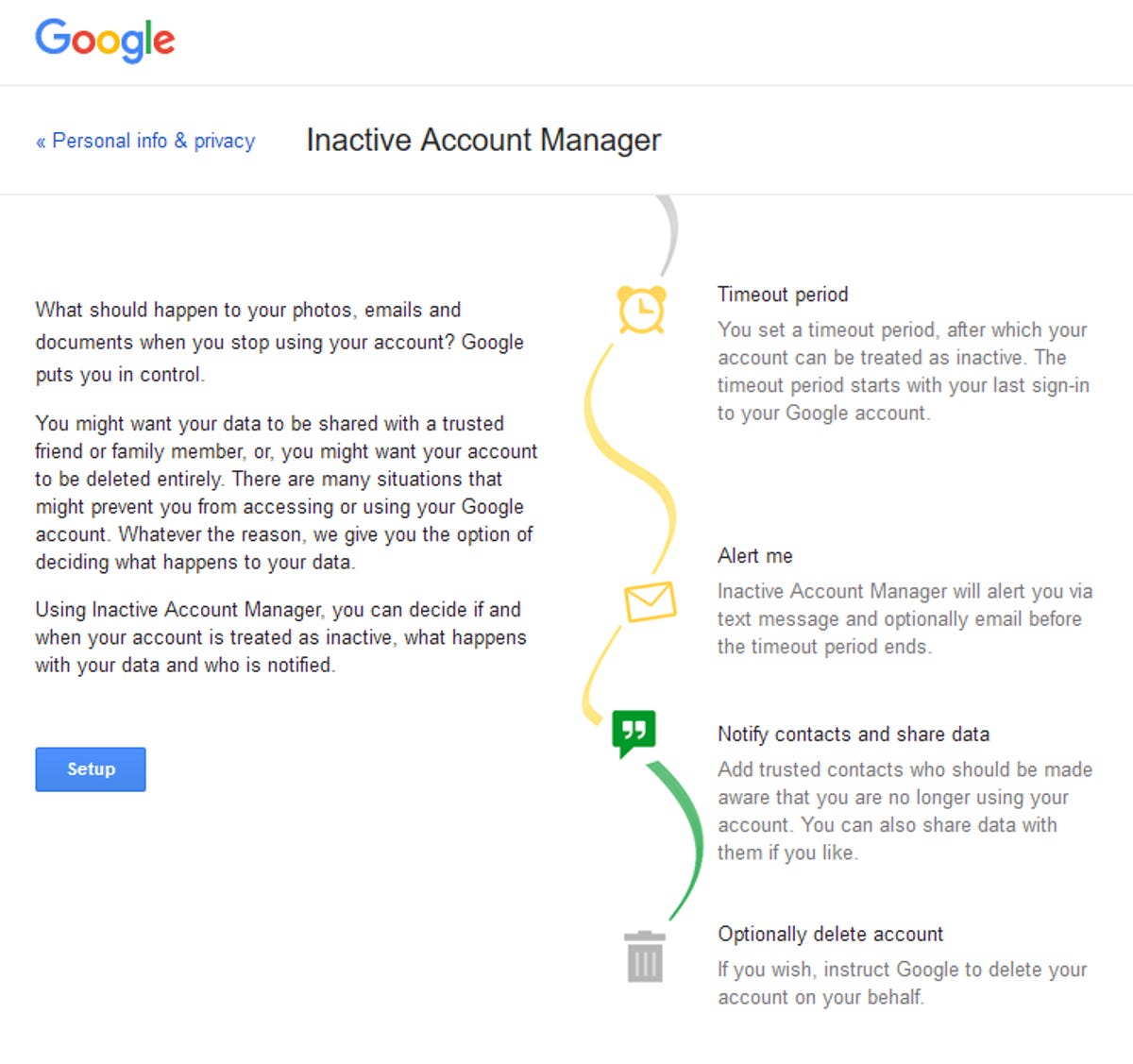

Sarah Jacobsson Purewal/CNET
To set up the Inactive Account Manager, login to your Google account and go to this page. Click Setup to start the process.
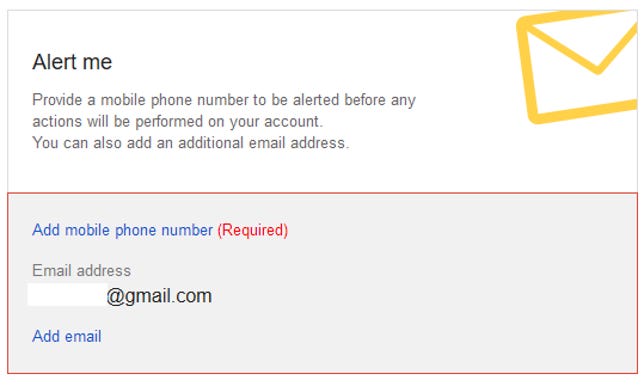

Sarah Jacobsson Purewal/CNET
First, you’ll need to add a mobile phone number to your account so that Google can alert you before your account goes inactive. You can also add an additional email address.
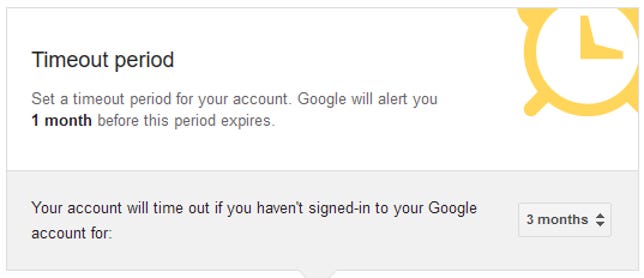

Sarah Jacobsson Purewal/CNET
Next, choose your timeout period — how long Google will wait before declaring your account inactive. Your options are three months, six months, nine months, one year, 15 months, or 18 months. Google will alert you one month before your timeout period expires.
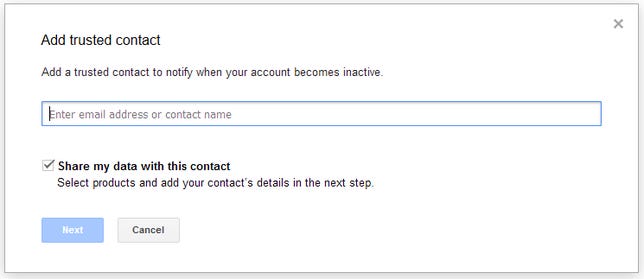

Sarah Jacobsson Purewal/CNET
Next, you can add up to 10 contacts who will be alerted if your account becomes inactive. To add a contact, click Add trusted contact and type in the person’s email address or contact name. If you want the contact to be able to download data from your account, check the box next to Share my data with this contact and hit Next.


Sarah Jacobsson Purewal/CNET
On the next screen, you’ll be able to choose what data you want to share with the contact — everything from Google +1s to your Orkut profile. You will also need to enter in your contact’s phone number so they can receive a verification code before they are allowed to access your data.
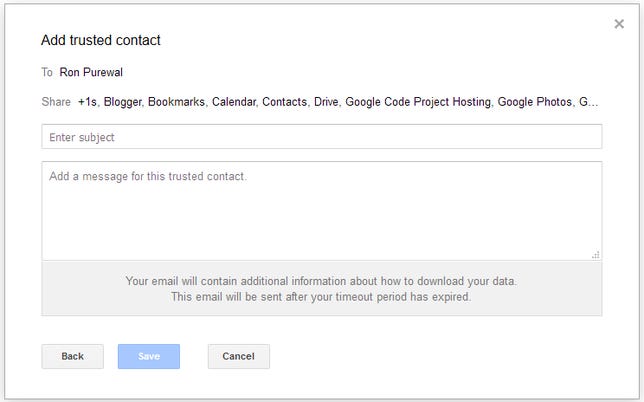

Sarah Jacobsson Purewal/CNET
Once you’ve chosen what accounts you want to share with your contact, you’ll need to type out an email that will be sent to them when your account expires. This email will automatically include information on how to access your account and data, but you can add a personal message of your own.


Sarah Jacobsson Purewal/CNET
Once you’ve added all of your trusted contacts, click Enable to turn on the Inactive Account Manager.
Microsoft
If you have a Microsoft email account (Hotmail, Live, MSN, or Outlook.com), family members will need to go through Microsoft’s Next of Kin process in order to gain access to your account data. Microsoft will release your account data — including emails, attachments, and your address book — to your next of kin on a DVD. Your next of kin will not receive your password or be able to access your account (just the data).
To start the Next of Kin process, your next of kin will need to email msrecord@microsoft.com and provide documentation that verifies that you are dead (or otherwise incapacitated) and that they are your next of kin, the executor or benefactor of your estate, or someone with power of attorney.
Yahoo


Click here for “Logging Out,” a look at death in the digital age.
Yahoo will not release any of your data when you die, so if you want your family to be able to access your account you will need to provide them with your login information (though Yahoo’s Terms of Service states that your account is not transferable, so technically providing your login info to your family is breaking their ToS).
While Yahoo will not share any of your data or account information, the executor of your estate/next of kin can request that your account be closed through this request process from Yahoo, which will require a request letter containing your Yahoo ID, as well as proof of your death and proof that they are the executor of your estate.
Facebook allows you to designate a legacy contact who can manage parts of your account when you die. Legacy contacts cannot sign into your account or see any private messages, but they can post a pinned post to the top of your Timeline, accept (or reject) new friend requests, and update your profile picture and your header image. They can also (with your permission) download an archive of your posts, photos, and profile information.
Learn how to assign a legacy contact here.
Twitter does not allow you to grant anyone access to your account when you die, though immediate family members and people who are authorized to act on your behalf can request that your account be deactivated when you pass away. If you want someone to be able to take over your account when you die, you’ll need to provide them with your login information.
To request that someone’s account be deactivated, you will need to use Twitter’s privacy form. You will need to provide proof of your relationship to the deceased, including your ID and a copy of their death certificate.
Instagram is owned by Facebook, but the photo-based social network does not offer the same post-mortem option of designating a legacy contact. However, Instagram does memorialize accounts — memorialized accounts cannot be changed or logged into, but they will remain visible and will not appear in Instagram’s public archives (like Search & Explore).
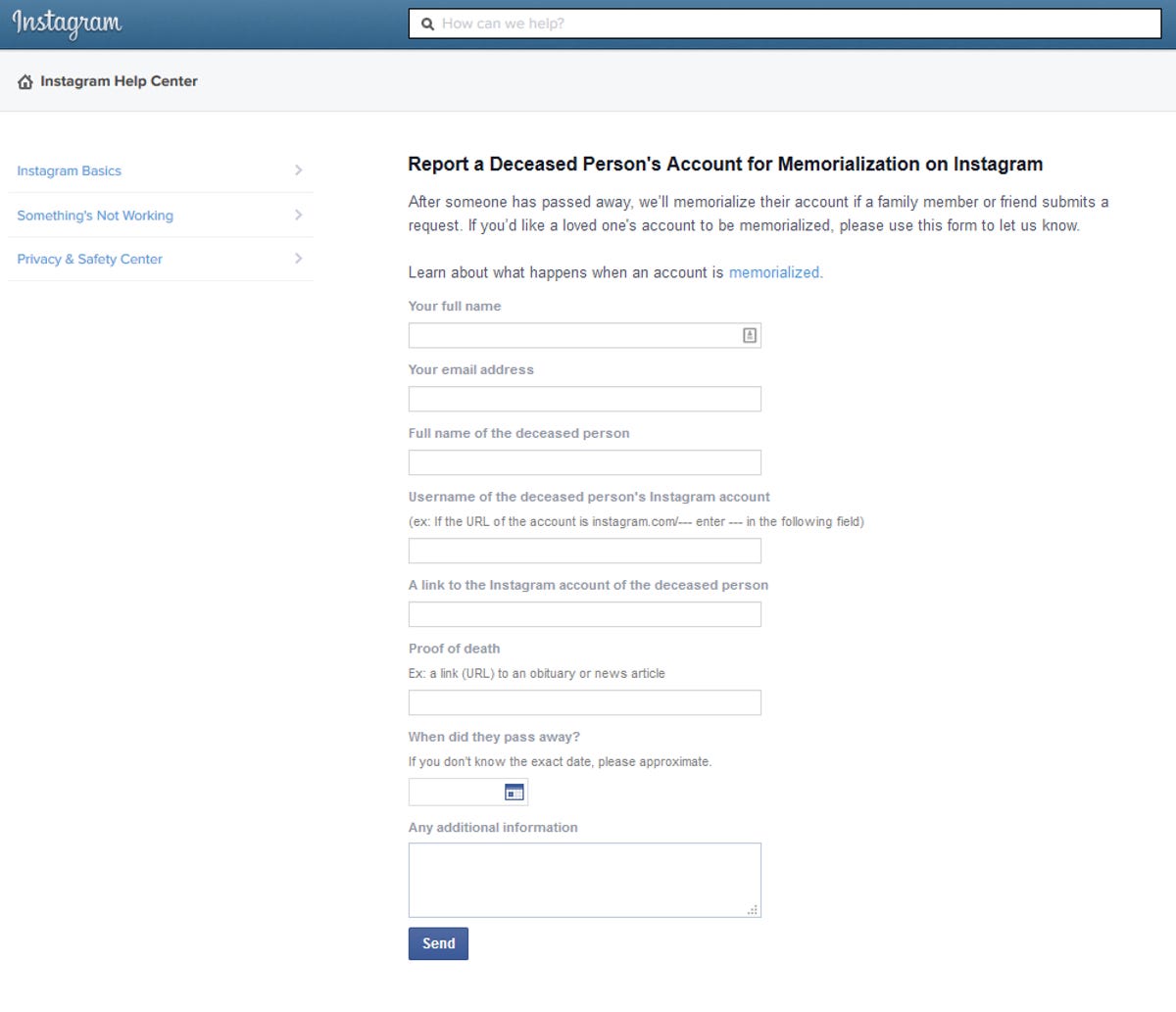

Sarah Jacobsson Purewal/CNET
Your friends and family members will need to contact Instagram about memorializing your account after you die, according to Instagram’s Privacy Policy, using this form. They will need to provide their name and email address, the deceased’s name and Instagram username, and proof of death, such as a link to an obituary or a death certificate.
Password Managers
Even the accounts that do let you designate a digital heir don’t let people fully access your stuff after you die. If you want to leave full access to your accounts to someone after you pass away, your best bet is to use a password manager with a legacy feature.
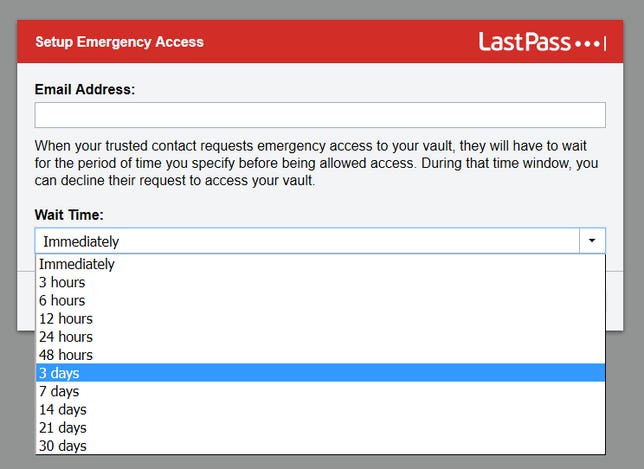

Sarah Jacobsson Purewal/CNET
LastPass has an Emergency Access feature that lets you give trusted contacts access to your password vault. To add a trusted contact, open your LastPass account and click Emergency Access. Click Give Emergency Access and type in your contact’s email address. Choose a wait time for how long that contact will have to wait when they request emergency access (anywhere from “immediately” to 30 days). If your contact requests emergency access, you will have this amount of time to reject their request before they are automatically granted access.
Dashlane also has an emergency access feature that lets trusted contacts request access to your vault, while PasswordBox features a Legacy Vault that lets you pass on your passwords to your next of kin.
Editor’s note: This article was originally published on March 2, 2016. It is being republished as part of CNET’s series “Logging Out” CNET’s look at death in the digital age.
CNET en Español: Get all your tech news and reviews in Spanish.
The Samsung Galaxy: All the news on Samsung’s most important products.




